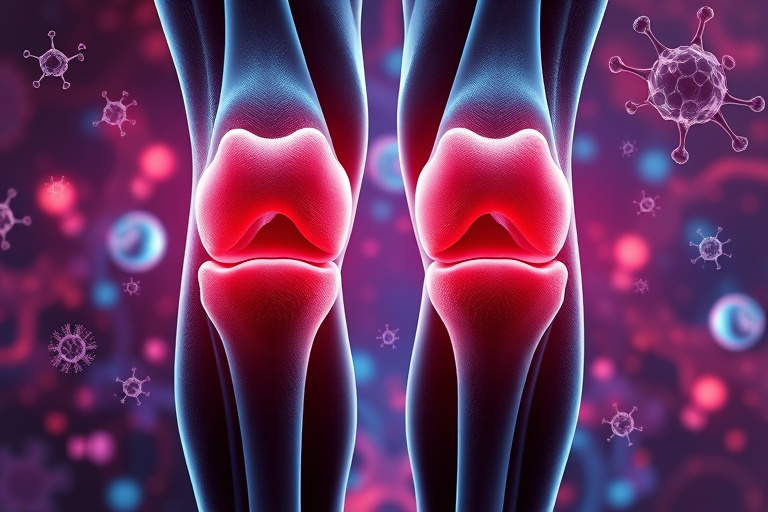Pure Cartilage Regeneration: The Key to Durable Joint Repair
Introduction: The Importance of Pure Cartilage Regeneration for Joint Health
Joint degeneration, often resulting from injury, aging, or degenerative diseases like osteoarthritis, poses significant challenges to maintaining mobility and quality of life. Traditional treatments such as physical therapy, medications, or even surgical interventions frequently fall short in restoring long-term joint function. A critical factor in successful joint repair is the regeneration of pure cartilage, specifically hyaline cartilage, which is essential for durable and natural joint movement. This article explores recent scientific advances and evaluates the viability of cartilage regeneration techniques aimed at achieving true hyaline cartilage repair, offering hope for more effective, long-lasting solutions.
What Is Pure Cartilage and Why Is It Critical for Joint Repair?
In the context of joint health, hyaline cartilage is the type of cartilage that lines the surfaces of bones within joints, providing a smooth, resilient, and low-friction interface. Unlike fibrocartilage, which is denser and less flexible, hyaline cartilage offers superior durability and functionality, enabling joints to withstand repetitive stress and load-bearing activities. When cartilage damage occurs, the body’s natural repair mechanisms often produce fibrocartilage instead of hyaline cartilage. While fibrocartilage can fill defects temporarily, it lacks the same biomechanical properties, leading to compromised joint function and accelerated degeneration over time.
Therefore, the formation of joint genesis of true hyaline cartilage during regenerative procedures is crucial for restoring long-term joint health and preventing further deterioration.
Current Challenges in Achieving True Cartilage Regeneration
Despite advances in regenerative medicine, regenerating pure hyaline cartilage remains a significant challenge. The primary difficulty lies in directing stem cells and other regenerative agents to produce tissue that closely mimics native hyaline cartilage in structure and function. Often, repair processes result in fibrocartilage formation, which, although filling the defect, does not replicate the biomechanical properties of original cartilage.
Factors contributing to this include the complex cellular signaling required for hyaline cartilage differentiation, the limitations of existing joint regeneration techniques such as microfracture, autografts, and allografts, and the body’s innate tendency to favor fibrocartilage formation during healing. These limitations hinder the achievement of durable cartilage repair capable of supporting long-term joint health.
Scientific Advances in Promoting Pure Cartilage Formation
Recent scientific progress offers promising avenues for overcoming these challenges. Stem cell therapy for joints utilizes mesenchymal stem cells (MSCs) and other progenitor cells to promote hyaline cartilage regeneration. These cells can differentiate into chondrocytes—the cells responsible for cartilage production—when provided with appropriate cues.
Complementing stem cell approaches, biomaterial scaffolds are engineered to support hyaline cartilage growth by mimicking the extracellular matrix of native cartilage, guiding cell differentiation and tissue organization. Additionally, growth factors such as transforming growth factor-beta (TGF-beta) and bone morphogenetic proteins (BMPs) are employed to enhance cartilage-specific differentiation and matrix synthesis.
Emerging techniques like bioprinting and tissue engineering are pushing the boundaries of regenerative medicine, aiming to produce pure cartilage constructs that integrate seamlessly with existing tissue. These innovations are paving the way toward more reliable and effective joint regeneration techniques.
Ensuring Safety, Reproducibility, and Long-Term Success in Cartilage Regeneration
While these advances are promising, ensuring the safety and reproducibility of regenerative therapies remains paramount. Clinical trials have demonstrated encouraging safety profiles for many emerging techniques, but standardization across different patient populations continues to be a challenge. Consistent quality control in cell sourcing, scaffold fabrication, and growth factor application is essential for predictable outcomes.
Furthermore, ongoing monitoring of regenerated cartilage through imaging and biomechanical assessments is vital to evaluate the durability and integration of new tissue over time. Establishing robust protocols will help translate laboratory successes into routine clinical practice, ultimately leading to long-term joint health.
How Close Are We to Fully Replacing Damaged Cartilage and Preventing Joint Degeneration?
Currently, regenerative strategies are progressing from experimental stages to clinical application, with some therapies already available for specific indications. While complete replacement of damaged cartilage in large or complex joints remains a goal, the focus is shifting toward techniques that can regenerate hyaline cartilage repair with high fidelity and durability.
These advancements hold the potential to significantly reduce or even eliminate the need for invasive joint replacement surgeries in the future. Ongoing research continues to refine these methods, with promising developments on the horizon that could revolutionize how we approach joint preservation and regeneration.
What This Means for Patients and Medical Professionals
For patients, the advent of regenerative cartilage therapies offers hope for more natural and lasting joint restoration. For medical professionals, understanding the nuances of joint regeneration techniques—including the importance of achieving true hyaline cartilage—is essential for selecting appropriate treatments and counseling patients effectively.
Key considerations include evaluating the durability and safety of regenerative options, as well as tailoring approaches to individual patient needs through personalized medicine strategies. Such considerations are critical to maximizing treatment success and ensuring long-term joint health.
Final Thoughts: The Future of Joint Repair through Pure Cartilage Regeneration
Achieving pure cartilage regeneration represents a pivotal goal in regenerative medicine for joints. The ability to regenerate hyaline cartilage that closely resembles native tissue promises durable, natural joint function and a significant reduction in degenerative progression. Scientific progress continues to accelerate, fostering optimism about future clinical applications that could transform orthopedic care.
Staying informed about emerging developments and ongoing clinical trials is essential for both patients and practitioners. As research advances, the prospect of restoring joints to their original, healthy state becomes increasingly attainable, heralding a new era in joint repair and long-term joint health management.




